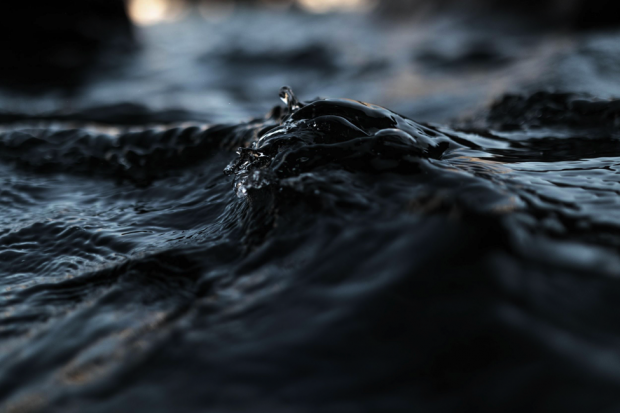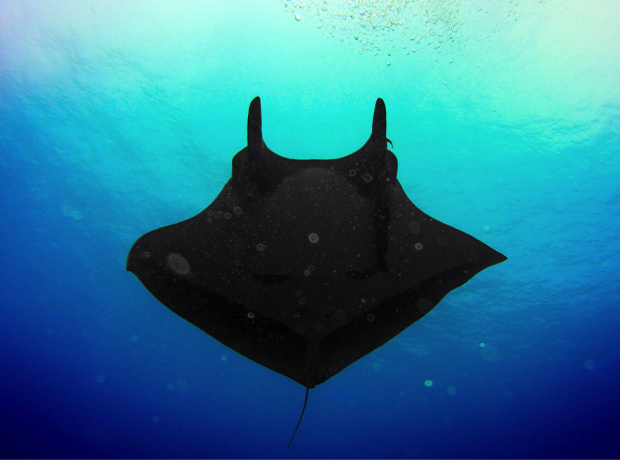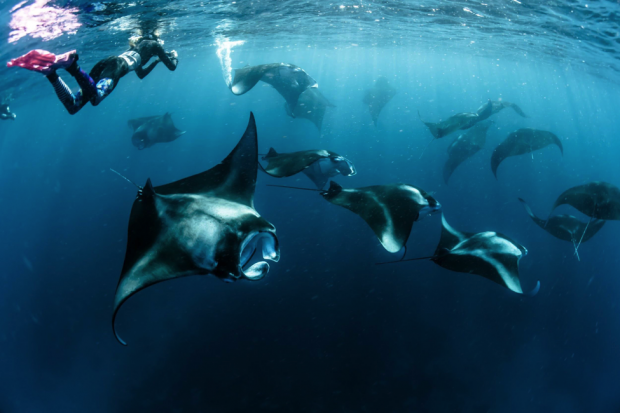Night Diving with Manta Rays in Hawaii (LL)
So, you’ve seen vibrant reefs and swam with schools of fish. You’ve scooped up shells from shallow ocean floors and snapped underwater pics of starfish. But when the underwater caverns have been explored, and sharks have crossed paths in the distance, it’s time for the next level. It’s time for something slightly spine-tingling yet serene, and night diving with manta rays is exactly that.

These dark dives are special and can only happen in a handful of places around the globe. One of the top manta ray diving destinations is Kona, Hawaii, where the conditions are right for these massive (and quite peaceful) sea dwellers. And, as opposed to other dive sites, the Kona waters are where manta rays feed, so Hawaii divers will get to see them in some of their most active and stealthy states.
Gentle Giants
Manta rays are some of the ocean’s most graceful gliders, “flying” through the water with winglike fins. Measuring in at between 15 and 20 feet wide and weighing in at nearly a ton, they’re quite a sight to see.
Regardless of their bulk, manta rays are known to breach the surface and expertly execute underwater somersaults to keep krill in check during feeding times. Most people have limited, if any, opportunities to see these unique sea creatures up-close, since a ray’s size restricts it from being kept in most captivity settings. The best way to witness these intelligent water giants in action is by pulling on a wetsuit and meeting them on their level…in the dark ocean waters.

Getting to the Diving Destination
Kona, HI is on the west coast of the Big Island of Hawaii. Direct flights from the continental U.S. to the Kona International Airport are typically available out of most big cities in California. Los Angeles and San Francisco are hubs for Hawaiian travel, so either is probably a good starting point. Don’t want to drag all of your gear along for this once-in-a-lifetime adventure? Find a San Francisco luggage storage location and stow your extra baggage.
Once you’ve made the five-hour flight to the Big Island, pick up a rental car or hop on the SpeediShuttle, which runs routes to hotels and cities all over the island. Lodging options are plentiful on this side of the island; get checked in and head for the water.
Dive Tour Details
Manta ray diving tours in Kona are offered by a few tour companies; most have been operating these excursions for a long time and have lots of tips and tricks to improve the experience. There are also some safety guidelines covered prior to a dive. Though the rays are friendly, divers will get a little insight into their behavior and hear some pointers on how to act when rays are present. Divers are instructed to avoid touching the rays, and blowing bubbles at them is a big no-no.
Dive options vary a bit, and participants can go full-immersion with wetsuits and air tanks or can just scan from the surface with snorkeling gear. All necessary equipment can be rented at the time of the tour.
Most tours depart just before the sun sets and span about three hours; grab the underwater cam, collect your gear, and get ready to ride.
Sunset Boat Ride
Though the dive session’s the highlight of this trip, there’s nothing like a bonus boat ride on the ocean at sunset. City vibes slip away as the sun slowly disappears, and in no time, you’ll arrive at Makako Bay (or one of a couple of other nearby feeding sites). This is where you’ll embark on your journey into the depths – which averages around 30 feet deep.

Suit Up and Flush Out
Once the gear’s secured and it’s go-time, tour guides will lead the way into the water. By shining flashlights into underground caves, divers draw dinner (in this case, plankton) out and wait for the show to begin. Once Project Plankton Flush is underway, the manta rays show up (well, around 80% of the time). So, be ready. Without the shadows from the sun, you might not see them coming.
Meet-and-Greet
When the manta rays arrive on the scene, it’s typically in silence and with strategy. When working in teams, the rays coordinate positions, bust out barrel rolls, and cruise in sometimes-disturbingly close ranges with human observers.
Divers and snorkelers are safe, though, as these peaceful filter feeders don’t have a mean bone in their bodies (they have no bones, really; they’re made of cartilage). When the swooshing and swishing subsides and the rays retreat to the deeper regions, it’s time to make the swim back to the boat.
It doesn’t get much better than diving with manta rays in Kona, HI, and once you’ve floated in chilly ocean currents with these colossal creatures, chances are, you’ll be back for another nighttime feeding.
Sources:
https://en.wikipedia.org/wiki/Manta_ray
https://www.hawaii-guide.com/big-island/kona-international-airport
https://www.lovebigisland.com/big-island-manta-ray-night-dive/
